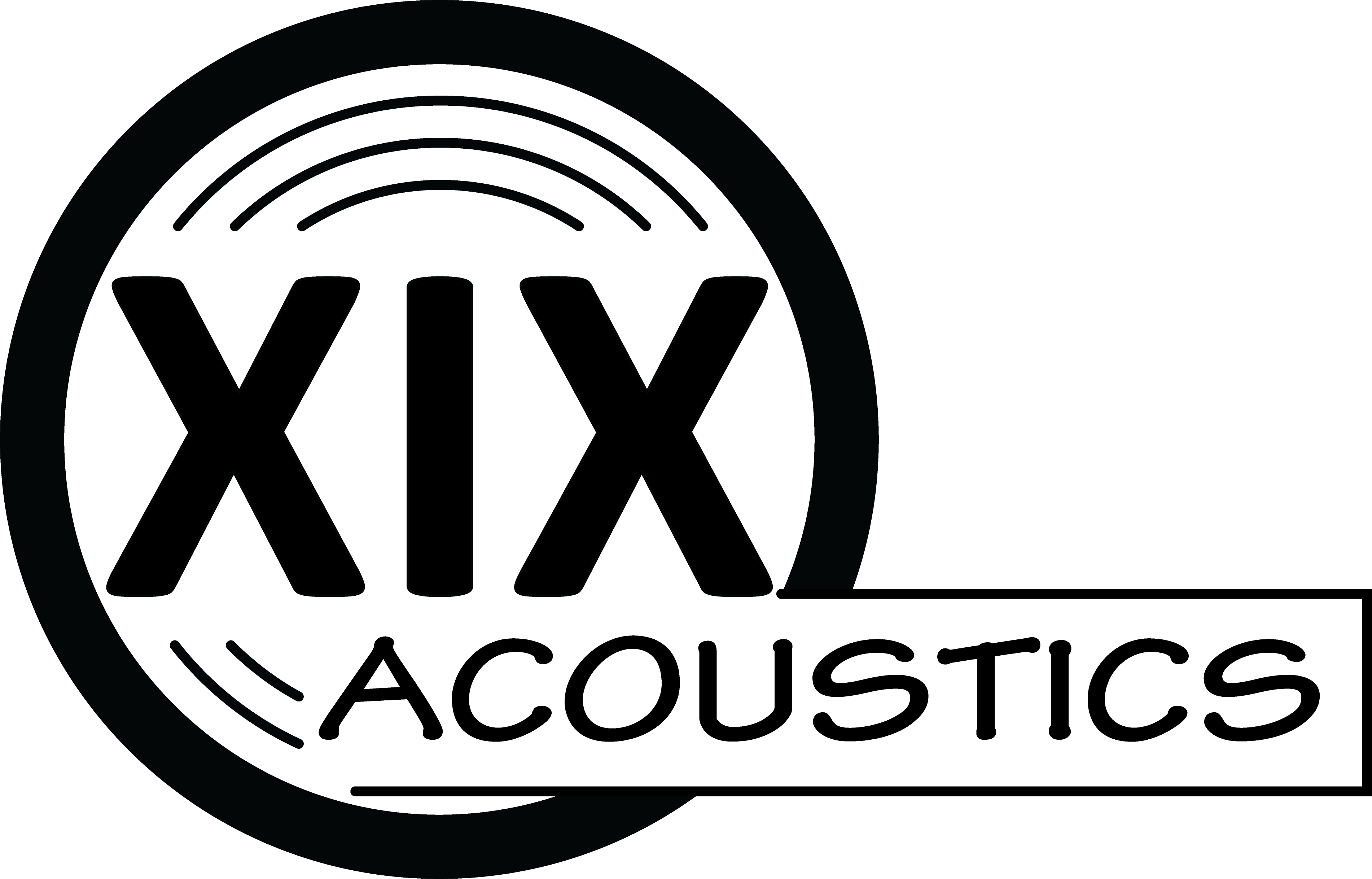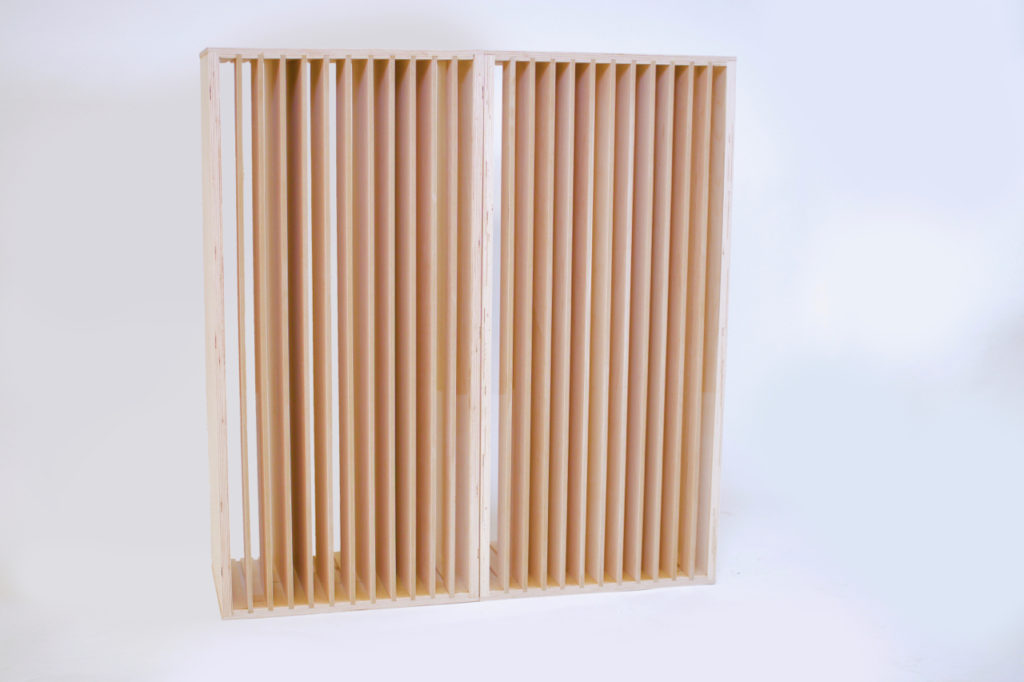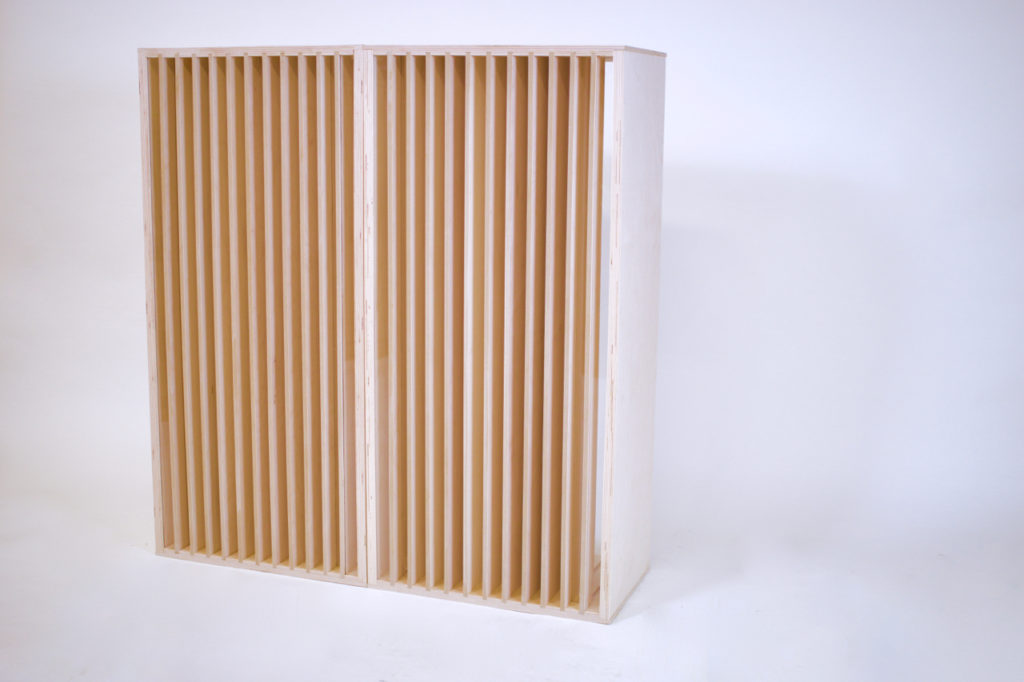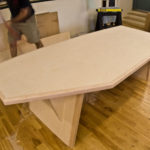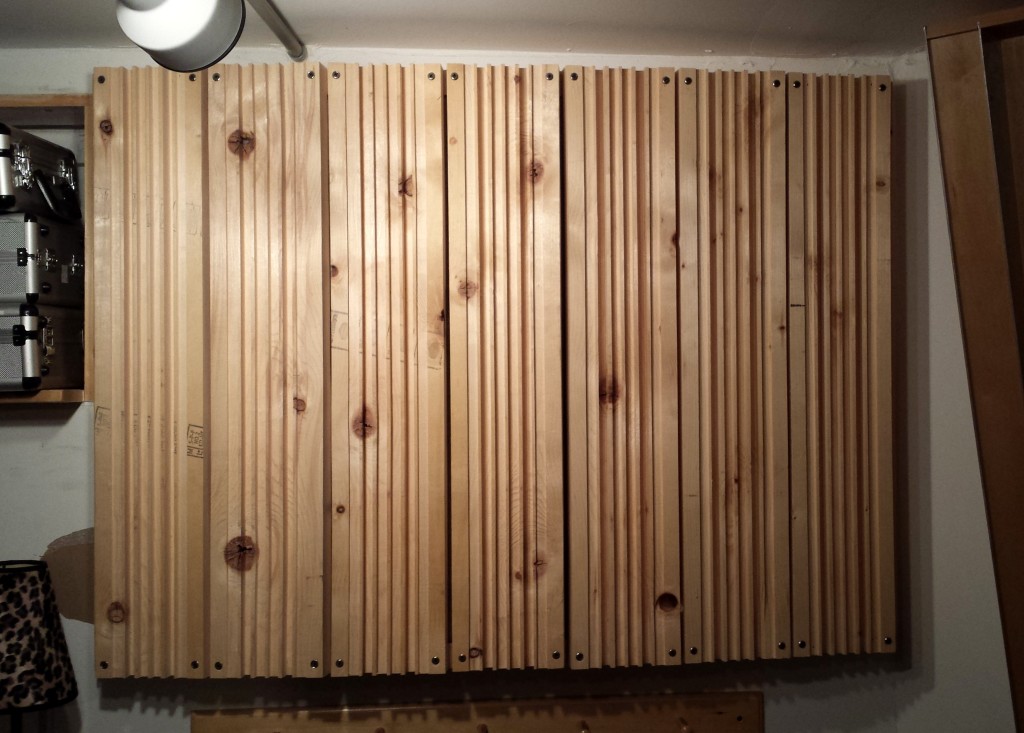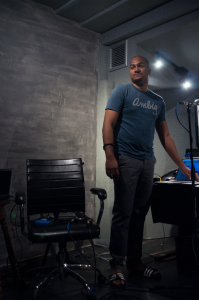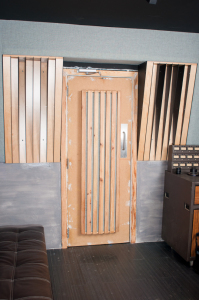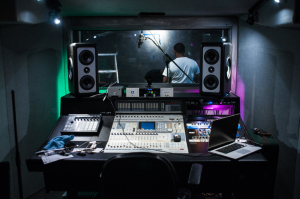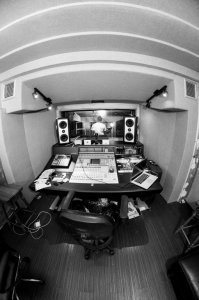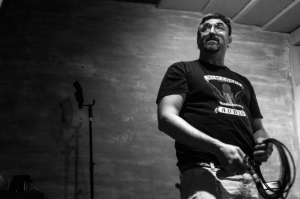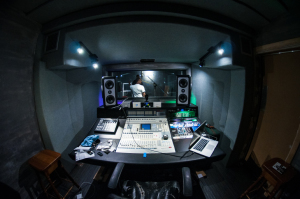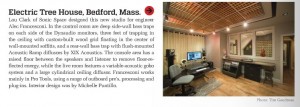Category: Products
Ergonomic Mix Desk
Baltic birch and rock maple mixing desk, ergonomically sized for user, preparing to go to the finishing house. Design by Alex Jaynes to XIX Acoustics specs.
Another treatment option is this hybrid absorber / polycylindrical diffuser. A QRD pattern is cut into softwood fir 2x stock (similar to RPG’s Flutter-Free) and then arranged on a large radius similar to a large polycylindrical diffuser. Air spaces are left between the mini-QRDs to allow low frequencies to pass while scattering mids and higher frequencies. The cavity of the treatment is filled with rigid fiberglass to reduce low-frequency build up.
This is a very nice treatment for rear walls of critical listening spaces and for general treatment of live and performance spaces.
Lou Clark of Sonic Space designed Electric Tree House for engineer Alec Francesconi in Bedford, MA. Lou specified for Acoustic Ramps and used them in an extremely creative way as part of a large integrated bass trap on the rear wall of the control room. The picture from Mix shows the front of the room. Here’s the rear of the room:

The photo isn’t quite as fancy as the one in Mix, but it does show a very interesting approach to using both diffusion and low frequency absorption. Go Lou!
The Acoustic Ramp is a wedge-shaped, quadratic residue diffuser (QRD) used to improve the acoustic properties of a room. The depth of the wells between the dividers changes over the length of the diffuser and this greatly improves the effective bandwidth. The ratio relationships between the well depths stay the same. The angled reflectors and wedge shape causes the effect of scattering both vertically and horizontally. We have done a lot of scientific testing and subject critical listening testing.
In critical listening rooms, an array of Acoustic Ramps make an ideal rear-wall treatment that helps to tighten the definition of imaging and clarifies the sound stage. In surround home theaters and group audiophile listening spaces, this rear-wall treatment helps to create a sense of envelopment and immersion for the listeners.
The goal of an Acoustic Ramp diffuser is to control the existing acoustics of the room WITHOUT absorbing the acoustic energy. A reflection of sound off of a flat hard surface can be disorienting and distracting. A reflection can mix with the source of the sound and cause comb-filtering which changes the timbre or tone-color of what you are hearing. People often describe the effect of comb-filtering as “hollowing out” the sound, making the sound “tinny”, or sounding like it is in a “garbage can.” Usually these are not the adjectives we want someone to use when describing our music!
The Acoustic Ramp is available custom built to your exact specifications. The standard Ramp is constructed of 1/2″ Rock Maple plywood reflectors, 1/8″ black powder-coated aluminum dividers and a 3/4″ Rock Maple plywood top plate. The Ramp is 24 1/8″ wide, 12 1/8″ deep and a hair under 45″ tall. Custom ramps are available in almost any size configuration, with any choice of materials with any color powder coating. Here’s photos and posts about some custom versions:
See-Through Acrylic at Andy Hong’s Kimchee Records
MDF and Pine Plywood at Echo Boston
Raw Aluminum and Rock Maple at Paul Pesco’s Studio 44
Custom-made Bamboo Stock Ramp
Big 12 Bass Trap for $250
For years we have been building custom absorber treatments like bass traps and wall panels for the studios we design and install. Now we are starting to sell these absorbers to the public. The Big 12 Bass Trap is the deepest fiber-based trap out there. At 24″ wide, 48″ tall and a whopping 12″ deep, the Big 12 Bass Trap extends to absorb more lower frequencies than those skinny little bass traps out there. The Big 12 also absorbs midrange and high frequencies so they can be used at early reflection points too!
Big 12 Features:
Wood Frame with an attractive front bevel
Fabric Wrapped Front & Back
Open Back For Increased Absorption
Free Standing and Mobile
Stack-able
I have known Andy Hong since I worked for him when we were at Reed Elsevier in the late 90’s. Andy’s Kimchee Records was recording and/or putting out some of the best of Boston bands like Karate, Heidi Saperstein, Tugboat Annie and the Willard Grant Conspiracy. At the time I was working with Andy, he was recording “In My Living Room” a compilation of songs recorded…in his living room. Andy advised me when I was at the beginning of building my home studio. Andy is the Gear Review Editor at Tape Op, so when I had developed my Acoustic Ramps into a real product, I got in touch to see if he would be interested in trying out a pair. The demo went great and he ended up reviewing the Ramps and buying 2 standard ramps and two custom made clear plexiglass Ramps to be placed in front of his window to the live room. Here’s two pictures of the Ramps in place:
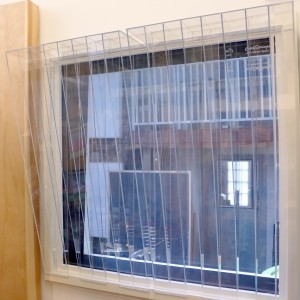
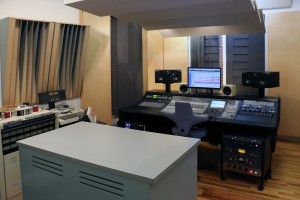

Another brilliant usage of Acoustic Ramps is shown photographed here. The array of 5 ramps is inverted and installed on an angle to support the slanted rear wall of this control room. The diffusers have been integrated into a bass trap with an 18″ base. Lou Clark of Sonicspace is the designer.
XIX Acoustics is very excited to announce a new partnership with Finland’s Innofusor! Innofusor makes custom acoustic absorbers from renewable surface peat fibers. The most exciting thing about peat fibers is that they do not need to be covered by fabric like fiberglass and mineral wool, so the color can be dyed into the fiber itself. Innofusor will also be manufacturing the Acoustic Ramp for the European market, both in standard and custom formats. Innofusor’s 1500 sqft manufacturing space is the perfect specialty facility to build Acoustic Ramps to service Scandinavia and the rest of Europe.

XIX Acoustics and Innofusor will be sharing ideas, materials, technology and intellectual property. We are very excited to see what this unique collaboration will yield!
